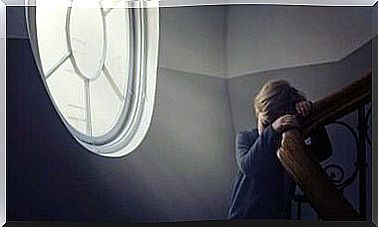Déjà Vu: How Could I Have Known This Place Without Having Been There?

It is not entirely certain that paramnesia and the famous déjà vu are the same thing, although they are often used interchangeably as they are very similar phenomena. In fact, there are two modes of paramnesia, memory and recognition, déjà vu is a specific type of the latter.
When we accidentally suffer from recognition paramnesia (also related to cryptomnesia) what we are experiencing is certainly an alteration or distortion of the reality of the facts: déjà vu, jamais vi, déjà feel …
The déjà vu: I have already experienced this moment
The phenomenon of déjà vu is identified with the feeling of having already lived a certain experience or having already lived something in the past. In fact, the term, which comes from the French, means “already seen” and means the fact of believing a perception that is not real is true, since usually these are new experiences.

Without a doubt, when we experience a déjà vu we know that something strange is happening: “Have I lived through this situation before?” Some studies have tried to explain the reason for these misperceptions, coming to formulate several theories.
What is the cause of déjà vu and similar processes?
Between the end of the nineteenth and the beginning of the twentieth century, psychoanalysis was one of the first psychological currents that tried to explain this mental phenomenon. In fact, two figures of the caliber of Sigmund Freud and Carl Jung gave an explanation : the first attributed it to repressed desires and the second to alterations of the collective unconscious.
There is no doubt that studies nowadays have focused on the cognitive processes of the human brain and memory abnormalities:
-
Neurological theory:
an electrical discharge is produced in the hippocampus and in the middle temporal lobe which causes the phenomenon, this justifies the fact that those suffering from epilepsy experience one before an attack.
-
Psychoanalyst theory:
the subconscious activates something we have imagined in the past, for example in a dream, or something we have already seen, like in a movie.
-
Double process theory:
Memory consists of two systems and when déjà vu occurs, they lose synchrony. In this case, only the familiarity system will be activated, but not the information retrieval system.
-
Holographic theory
: the memories we have are deposited in the so-called holograms. The déjà vu is when the memory draws on these holograms and forms a scene starting from the recovered details.

Types of déjà vu
As we have already seen, paramnesias of this type are closely related to memory. These “singular memories” can be experienced by all of us, although for experts the incidence levels are much higher among young people aged 15 to 25.
-
Déjà vécu: These are most of the déjà vu you can experience in life. These are those that we described earlier as “already lived” without being sure.
-
Jamais vu
: in Italian, “never seen”. It is the opposite circumstance, that is when we have the impression of not being at ease in front of a circumstance that we do not remember having lived.
-
Déjà feel
: in Italian “already heard”. It can especially happen to epileptic people who suffer damage to the temporal lobe: they experience the false recognition of sensations they believe they have already experienced.
-
Déjà visited
: consists of having memories that seem certain about a place we are visiting for the first time. Some people seem to remember specific details of the place without ever having seen it before.
-
Déjà èprouvé
: “already tried”. It is like having experienced different types of paramnesia of the same nature at the same time, the sufferer perceives the whole experience (with images, smells, noises, etc.) as completely familiar.









